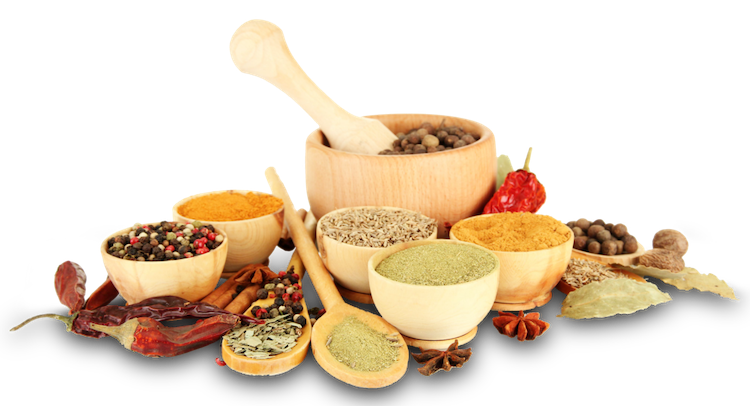Cheap Eats:
Chicken Masala
A chicken in every pot was not first promised by American politicians but by a French king. Henry IV (Henry of Navarre) said, in the 16th century, "I want there to be no peasant in my realm so poor that he will not have a chicken in his pot every Sunday." Nowadays, chickens outnumber humans worldwide, and just about everybody can boil up a bird once considered so sumptuous that it was forbidden for religious fast days.
Today’s chicken, regardless of the variety, is descended from Gallus gallus, a wild red jungle fowl indigenous to southeast Asia, which was first domesticated in India about 4,000 years ago. Originally a sacred bird sacrificed for the sake of augury, it is likely that chicken made it to the table early on, though documentation seems to show that eggs and cockfights were sometimes of greater interest to those who later adopted the fowl.
Though chicken probably reached central Europe by 1500 BC, it appears to have reached the Middle East later. A painting of a chicken was found in the tomb of Tutankhamun, which shows that it was in Egypt by at least 1350 BC, and the chicken’s appearance on Assyrian seals shows that it reached Asia Minor by the eighth century BC
Though the Greeks and Romans didn’t exactly rush to get the chicken in their pots, references to hens’ eggs started appearing in the fifth century BC, and by 185 BC, chicken was being widely consumed. The earliest cookbook on record, written by the first-century Roman gourmet, Apicius, lists numerous chicken recipes, and the bird held a place of honor on the tables of Pompeii. (Though Romans learned to raise chickens from the Greeks, it is likely that Rome’s insatiable desire for Chinese luxuries, which included spices as much as silks, was a major factor in the escalating popularity of chicken, since the Silk Route carried new culinary ideas as well as trade goods.)
In Europe, the chicken, and more especially the capon, enjoyed huge popularity during the Middle Ages. That city councils were expressing concern about over-indulgence by the early 800s is testament to the fowl’s success, as are the cookbooks that started popping up in the mid to late 13th century with recipes for stuffed capon and chicken stew.
Etymologically, the word "chicken" comes from the Middle English chiken, which in turn comes from the Old English, cicen, a young chicken. Since Old English was spoken from the 7th century to about 1100, the chicken had obviously made an early leap across the channel, probably with Germanic invaders, for whom the bird was kuchen. (When the Normans invaded in 1066, they brought their French terms, hence the addition to our language of poultry and pullet.)
Chicken today is probably the most universally eaten of all meats. Its tropical origins have not kept the bird from acclimating to the majority of habitable regions, and among domesticated animals, only the dog has a wider range. Even in poor countries, or countries with limited grazing land, chicken can be easily and inexpensively raised, which is why almost every cuisine in the world — especially in Asia and Africa — has chicken recipes.

The following recipe is from India. Its fragrance is heady and its taste is rich and exotic. I love this dish. I recommend serving it with white Basmati rice (to soak up all the lovely juice) and perhaps a cucumber raita (a "salad" composed of plain yogurt and chopped cucumber flavored with sliced green onions and a little salt and crushed red pepper) or something similarly refreshing. If made with non-fat yogurt and chicken breasts, this is also an incredibly low-fat, heart-healthy dish.
Chicken Masala
2 garlic cloves, minced
2-inch piece fresh ginger, peeled and grated or minced
1 tsp. ground turmeric
2 tsp. ground cumin
1 tsp. crushed red pepper
1 tsp. ground black pepper
3 Tbs. finely chopped fresh cilantro
2 cups plain yogurt
½ tsp. salt
2 lb. chicken pieces, skin removed
4 Tbs. olive oil
2 onions, chopped
Combine the garlic, ginger, turmeric, cumin, red pepper, black pepper, fresh cilantro, yogurt, and salt in a large bowl and mix well. Add the chicken pieces, making sure each piece is well coated with marinade. Let chicken marinate for four hours (can be more, but shouldn’t be less), preferably in refrigerator. Turn chicken occasionally, to ensure maximum exposure to marinade.
Heat the oil in a wok or large frying pan over medium heat. Add the onions and sauté until golden brown. Add the chicken and the marinade to the pan. Heat to simmering point, then reduce heat, cover and cook for 20 minutes, or until chicken is cooked through. Best served hot. Also great reheated, and even cold it’s good.
Serves 4-6.

